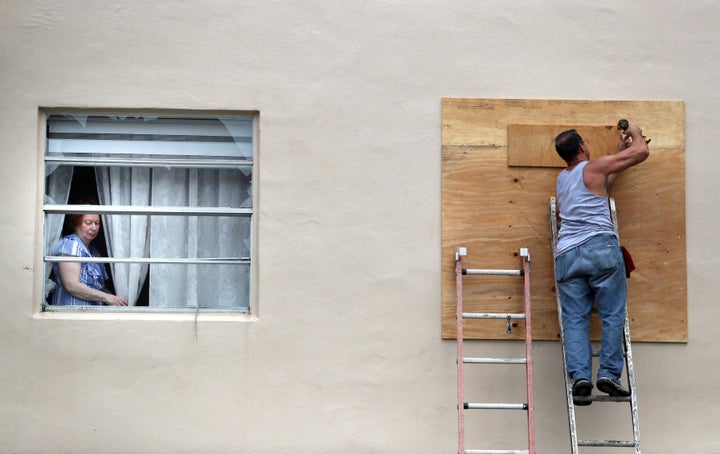At least one death is likely linked to the storm, which made landfall Wednesday afternoon as a Category 4 beast.
Hurricane Ian made landfall in Florida on Wednesday as a powerful Category 4 storm. Residents across the state were hunkered down, with widespread power outages, damage and at least one fatality likely linked to the storm.
Officials in Palm Beach County said the body of a 34-year-old man had been found in floodwaters in Martin County, Florida. The cause of death was still under investigation, although rescue workers said it was likely linked to the hurricane.
Florida emergency rescue officials warned residents to stay indoors until the storm had passed and to never walk or drive through floodwaters. Should water comes into any homes, they said, residents were urged to seek the highest ground indoors.
The National Oceanic and Atmospheric Administration’s Ocean Service reported water levels had surged more than 6 feet above normal high tide levels in Naples, Florida, just before Ian made landfall. That figure was far higher than the record of 4.25 feet set during 2017’s Hurricane Irma.
Storm surge records were also set in Key West and Fort Myers. Videos from those areas show water flowing through streets.
Later Wednesday, Florida Gov. Ron DeSantis (R) warned those further inland to prepare for “major, major flooding events,” urging Floridians to heed mandatory evacuation orders. He said the storm surge was as high as 12 feet in some areas, describing the storm as “battering” the southwest part of the state.
“This is a big one, and I think we all know there’s going to be major, major impacts,” he said at a news briefing. “At a minimum, it’s going to be a very strong Category 4 that’s going to rank as one of the top five hurricanes to ever hit the Florida peninsula.”

More than 986,000 homes and businesses were without power in southern Florida, or about 20% of customers, according to the area’s electricity provider, Florida Power & Light. Another provider, Lee County Electric Cooperative, said more than 206,000 customers didn’t have electricity.
Across the state, 2 million people had lost power.
Rescue workers were sifting through hundreds of rescue calls, The Miami Herald reported, although 911 centers were down in some counties heavily affected by the storm.
“We are getting a significant number of calls of people trapped by water in their homes,” the Collier County Sheriff’s Office, which encompasses Naples, said in a statement obtained by the South Florida Sun Sentinel. “Some are reporting life threatening medical emergencies in deep water. We will get to them first. Some are reporting water coming into their house but not life threatening.”
“They will have to wait,” the office added. “Possibly until the water recedes.”
The National Hurricane Center said Ian’s effects would likely be felt for days. The storm is expected to move up the coast, bringing a“life-threatening storm surge” on Thursday and Friday to northeast Florida and into Georgia and South Carolina.

By Wednesday afternoon, Ian was barreling toward Florida with maximum sustained winds of 155 mph, just shy of becoming a Category 5 monster. Just hours later the National Hurricane Center said Ian had made landfall as an “extremely dangerous” Category 4 hurricane.
It’s the strongest storm to hit the state since the devastating Hurricane Michael hit Florida in 2018.
Ian’s power had sucked seawater from Tampa Bay in what’s known as a negative storm surge. Officials said the phenomenon could prove dangerous when the water returns, propelled by fierce winds. Residents were warned to stay away from shorelines with receding tides, saying the whiplash could be life-threatening.
Credit: Source link